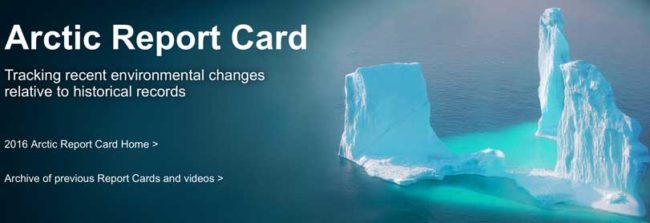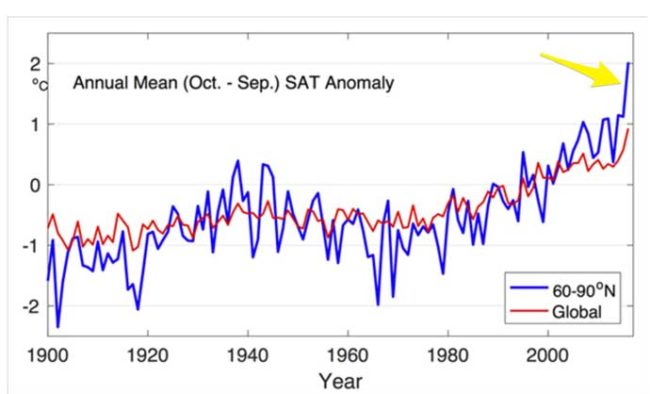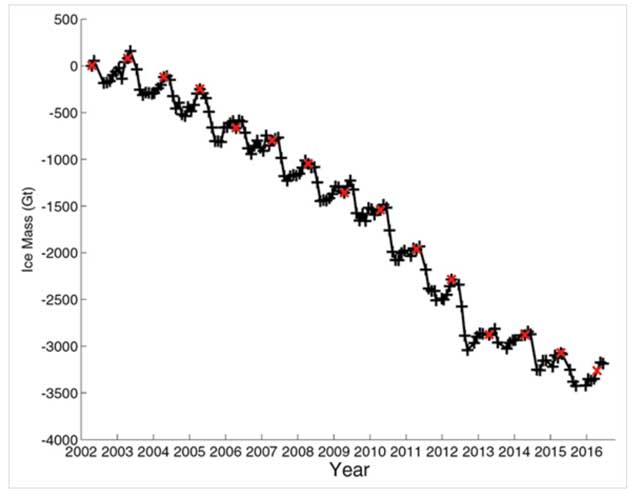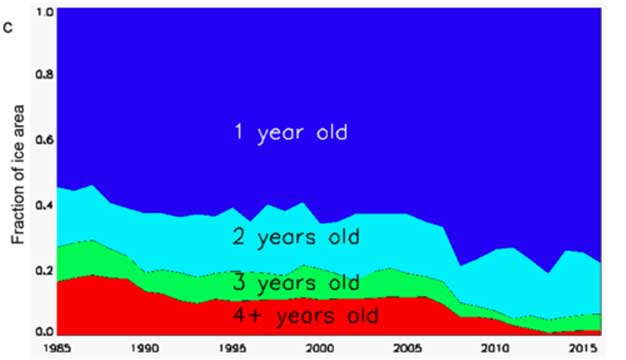 The annual Arctic Report card has been published and it spells out some rather dire facts. Global warming in the Arctic region is accelerating and 2016 has been the warmest Arctic year ever recorded.
The annual Arctic Report card has been published and it spells out some rather dire facts. Global warming in the Arctic region is accelerating and 2016 has been the warmest Arctic year ever recorded.
“temperatures in the region continue to climb at double the rate of the planet as a whole.“
What is the Annual Arctic Report card?
Issued annually since 2006, the Arctic Report Card is a timely and peer-reviewed source for clear, reliable and concise environmental information on the current state of different components of the Arctic environmental system relative to historical records. It is issued every December.
Who is it aimed at?
Basically anybody, it is not specifically by the scientific community for the scientific community. The goal is to be of source of reliable information for not just other scientists, but also teachers, students, decision-makers, and the general public interested in the Arctic environment and science.
In other words, if interested in the Arctic and what is happening, then it is for you.
Who issues this?
The press conference announcing it each year is held at the American Geophysical Society meeting (which is taking place this week, hence was published last Tuesday), but it is actually an initiative of the National Oceanic and Atmospheric Administration. (NOAA).
What does the 2016 Report card tell us?
What it tells us should not be a surprise, but in short, things are rather dire. The long term warming trend has continued. The sea ice loss is triggering extensive Arctic Changes.
The home page for the 2016 report is here. This is your portal into a flow of highly reliable information that has been written by 61 authors from 11 different countries. The 12 essays it contains were subject to independent peer-review organized by the Arctic Monitoring and Assessment Programme (AMAP) of the Arctic Council, so it’s robustness can be depended upon.
The highlights listed for the 2016 report are as follows:
- The average surface air temperature for the year ending September 2016 is by far the highest since 1900, and new monthly record highs were recorded for January, February, October and November 2016.
- After only modest changes from 2013-2015, minimum sea ice extent at the end of summer 2016 tied with 2007 for the second lowest in the satellite record, which started in 1979.
- Spring snow cover extent in the North American Arctic was the lowest in the satellite record, which started in 1967.
- In 37 years of Greenland ice sheet observations, only one year had earlier onset of spring melting than 2016.
- The Arctic Ocean is especially prone to ocean acidification, due to water temperatures that are colder than those further south. The short Arctic food chain leaves Arctic marine ecosystems vulnerable to ocean acidification events.
- Thawing permafrost releases carbon into the atmosphere, whereas greening tundra absorbs atmospheric carbon. Overall, tundra is presently releasing net carbon into the atmosphere.
- Small Arctic mammals, such as shrews, and their parasites, serve as indicators for present and historical environmental variability. Newly acquired parasites indicate northward shifts of sub-Arctic species and increases in Arctic biodiversity.
There is also a short official YouTube clip that introduces it …
Three Graphics that give us a glimpse of the unfolding story in the #Arctic
The report contains a few graphics that communicate what is happening, and so I’ve picked three.
The excessive warming in the Arctic
Currently, the Arctic is warming at more than twice the rate of lower latitudes …
The on-going decline of the Mass of the Greenland Ice Sheet
Monthly change in the total mass (in Gigatonnes) of the Greenland ice sheet between April 2002 and April 2016, estimated from GRACE measurements. The red crosses denote the values for the month of April of each year. …
The Decline of Old Sea Ice
There has been a sharp decline in old ice, it is no longer surviving …
… and yet Trump thinks it is all a Chinese “Hoax” and his friends equate overwhelming evidence like this to be on par with a flat earth belief. That is perhaps rather ironic given the observation that even the president of flat earth society (which has believers all around the globe) accept the evidence that fossil fuel usage is contributing to global warming.
Media
Chris Mooney has a good writeup of the Arctic Report within the Washington Post – The Arctic just had its hottest year on record ‘by far,’ scientists say.



